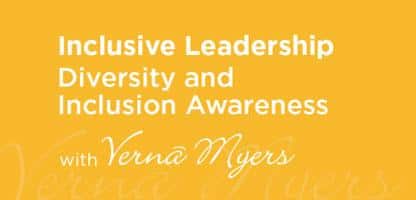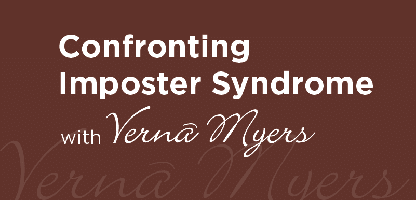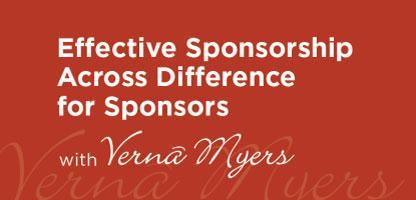DEI Online Training
TVMCU Online Training Courses
Vernā Myers and The Vernā Myers Company (TVMCU) proudly offer a unique set of DEI online training courses. Available on www.tvmcu.com, these dynamic online courses are taught by DEI pioneer, Vernā Myers and designed to help learners develop skills and strategies for building more inclusive and culturally competent work environments. When it comes to your diversity, equity, inclusion, and belonging practice, having actionable tips and best practices are vital to implementing strategies as a well-informed ally, sponsor, and leader.
When it comes to leadership, the practice of inclusion through actions, behavior, and language is and important skill. Having a personal stake in making diversity, equity, and inclusion a reality in our organizations is an important responsibility. Our work as leaders is to create environments where diversity, equity, inclusion, and belonging can thrive. Inclusive leaders create environments where people of all backgrounds feel respected, can contribute their talent and perspectives, and are given fair access to meaningful opportunity.
Most of us think of ourselves as kind, fair, and well meaning, and we are, but being well meaning is not enough when it comes to being an inclusive leader. Our TVMCU online courses have been viewed by thousands of people across various industries and organizations worldwide. Our courses are designed to provide leaders (or aspiring leaders) with the important and necessary tools required to support and cultivate a thriving team and inclusive organization.
Exploring Unconscious Bias with Vernā Myers
Training Course
Addresses the impact unconscious bias has on building and retaining a diverse and inclusive workplace.
Inclusive Leadership with Vernā Myers
Training Course
Learn practical and valuable tips on how to begin leading in a more inclusive environment within your organization.
Fair and Effective Interviewing
Training Course
This course highlights skills for interviewing with an inclusive mindset and understanding the stereotypes and biases.
Exploring Unconscious Bias For Law Organizations
Training Course
Approved for 1.0 Hours of Elimination of Bias CLE Credits California
Talking Boldly™ with Vernā Myers
Training Course
We know that many people shy away from talking with others about difficult and sometimes controversial social.
Talking Boldly: The Evolving Role of White Men in the Workplace
Training Course
Workplace becomes more diverse and inclusive, some white men experience discomfort and worry about where they fit in.
Confronting Imposter Syndrome
Training Course
In this dynamic course you will learn skills to recognize, understand, and break through Imposter Syndrome.
Effective Sponsorship Across Difference for Sponsors
Training Course
This course covers the role of Sponsors and describes the unique challenge of sponsoring across differences.
Effective Sponsorship Across Difference for Protégés
Training Course
Role of Protégés and describes their importance to the success of the sponsor-protégé relationship.
Vernā’s LinkedIn Learning Courses
In a partnership with LinkedIn Learning, Vernā developed these micro-courses focused on topics such as confronting bias, allyship, and having politically charged conversations. Vernā’s courses have been viewed by over a million people across the globe.

Confronting Bias: Thriving Across Our Differences With an introduction by Arianna Huffington
Find greater meaning, well-being, and productivity by learning how to interact with others across differences. Continue your journey and discover how to create inclusive environments where everyone can thrive.

Leading Your Org on a Journey of Allyship
Join inclusion strategist, author and instructor, Vernā Myers, to learn how to grow a more inclusive workplace and become an ally in and out of the office.

Talking Boldly: When Inclusion Meets Politics at the Office
This course introduces useful strategies and approaches to holding conversations about politics while keeping the peace in the workplace. Vernā covers how to have genuine conversations about politics, inclusion, mutual respect, rules of engagement to help navigate heated eruptions.









